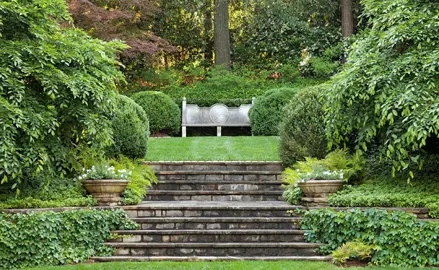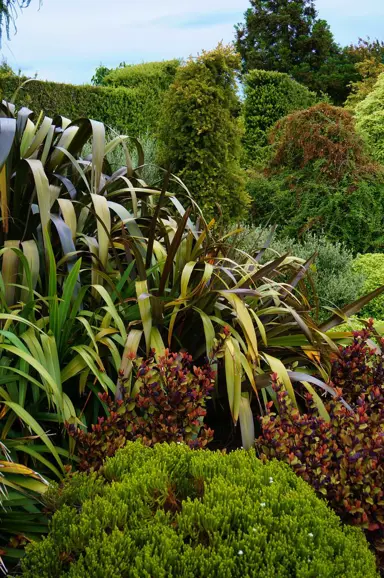
The Plant Company grows, sells, and ships Thuja plants throughout NZ. We pride ourselves on producing high quality plants and seeing the joy from our customers when they receive them. We do hope you enjoy them and support this NZ business that is passionate about Thuja plants.
Thuja 'Green Giant' is a smaller variety of Cedar and bears sprays of glossy, dark green foliage held on slender stems. The result is a tree with a...
Thuja occidentalis 'Pyramidalis' is an elegant conifer that grows with a narrow and dense, pyramidal shape. The foliage is dark green, sometimes...
Thuja occidentalis Rheingold is dwarf conifer that features leaves that are golden yellow and take on copper tones during winter. The foliage is soft...
Thuja 'Smaragd', commonly known as the Green or Emerald Cedar, grows with a narrow, dense, and columnar habit. The foliage is rich green, sometimes...
Thuja 'Blue Cone' is a dwarf conifer that features dense and erect sprays of green foliage. It gets its name from the blue cones produced during...
Thuja plicata, commonly known as the Western Red Cedar, is a conifer that grows into an attractive and large tree. It grows with a dense, conical...
Thuja plicata Old Gold features foliage that is rich yellow and develops bronze tones in winter. It is held in clusters which produces a layered...
Thuja occidentalis, commonly known as White Cedar or Eastern Arborvitae, is a hardy, evergreen conifer valued for its dense, pyramidal form and soft...
Thuja occidentalis Caespitosa is an attractive, dwarf conifer that grows with a rounded habit carrying fine, green foliage held tightly. It typically...
Thuja occidentalis 'Holmstrup', commonly known as Eastern Arborvitae, has foliage that is rich green and produced with a layered effect that provides...
Thuja orientalis Aurea Nana is dwarf conifer that features foliage made up of dense and erect sprays of yellow-green foliage. The foliage is soft and...
Thuja orientalis Rosedalis, commonly known as Oriental Thuja, is dwarf conifer with foliage that is made up of dense and erect sprays of green-yellow...
Growing colourful trees in your garden delivers a vast range of benefits:
We have the largest variety of Cedar trees, and we have the right one for your space. Our trees have been selected to thrive in NZ’s climate. We grow and stock only the highest quality plants, sourcing them locally, and from NZ’s leading nurseries. Each plant is packed and transported with extreme care, ensuring it arrives to you in the same condition it was in when it left the nursery. If you are wanting to buy Thuja, shop with confidence from the best in the industry.
Thuja, also known as arborvitae, is a popular evergreen coniferous tree that is often used for landscaping and privacy screening. While Thuja offers many benefits, it also has some disadvantages that should be considered before planting one.
Disadvantages of Thuja:
Despite these disadvantages, Thuja is a popular choice for landscaping due to its many benefits, such as its attractive appearance, evergreen foliage, and ability to provide privacy screening. If you are considering planting Thuja, it is important to weigh the pros and cons carefully to make sure it is the right choice for you.
Thuja, also known as arborvitae, is a popular evergreen coniferous tree that is widely used for landscaping and privacy screening. It is valued for its attractive appearance, adaptability to various conditions, and range of benefits it provides. Here are some of the special features of Thuja:
In summary, Thuja trees offer a combination of aesthetic appeal, practical benefits, and adaptability that make them a popular choice for landscaping and environmental applications. Their evergreen foliage, varied growth habits, and ability to provide privacy screening, wind protection, and erosion control make them valuable additions to gardens, parks, and natural areas.
The genus Thuja, which includes a variety of evergreen coniferous trees also known as arborvitae, is often referred to as the "tree of life" for several reasons. These reasons stem from both its symbolic and practical significance.
Symbolic Significance:
Practical Significance:
In conclusion, the designation of Thuja as the "tree of life" stems from a combination of its symbolic and practical significance. Its evergreen nature, resilience, and longevity have made it a symbol of everlasting life and vitality, while its medicinal properties and contribution to air purification further reinforce its connection to the life-giving aspects of nature. Thuja's presence in gardens, landscapes, and natural areas serves as a reminder of the enduring power of life and the interconnectedness of all living things.
The fastest-growing Thuja species is the Green Giant Thuja (Thuja standishii x plicata). It can grow up to 5 feet (1.5 meters) per year and reach a height of 40 feet (12 meters) or more.
Here are some other fast-growing Thuja species:
The growth rate of Thuja trees can vary depending on the growing conditions, such as the amount of sunlight, water, and nutrients available. In general, Thuja trees will grow faster in warm, sunny locations with well-drained soil.
The lifespan of a Thuja tree can vary depending on the species, growing conditions, and care. However, in general, Thuja trees are long-lived and can live for hundreds of years or more.
Here are some examples of the lifespan of some common Thuja species:
The growth rate of Thuja trees can vary depending on the species, growing conditions, and care. However, in general, Thuja trees are relatively fast-growing conifers. The fastest-growing Thuja species, the Green Giant Thuja (Thuja standishii x plicata), can grow up to 5 feet (1.5 meters) per year and reach a height of 40 feet (12 meters) or more. Other fast-growing Thuja species include the Leyland Cypress (Cupressus x leylandii), which can grow up to 6 feet (2 meters) per year, and the Emerald Green Thuja (Thuja occidentalis 'Smaragd'), which can grow up to 2 feet (0.6 meters) per year.
Determining the "best" Thuja tree depends on your specific needs and preferences. Different Thuja species have varying characteristics and growth habits, making them suitable for different purposes and landscapes. Here's a brief overview of some popular Thuja species and their strengths:
When selecting a Thuja tree, consider factors like growth rate, mature size, desired shape, foliage colour, and tolerance to sun exposure and soil conditions.
“Thuja” is a genus of evergreen coniferous trees in the cypress family (Cupressaceae), also known as arborvitae. The Green Giant, also known as Green Giant Arborvitae, is a cultivar of the Thuja standishii and Thuja plicata species. So, the Green Giant is a Thuja, but not all Thuja are Green Giants.
The local name for Thuja varies depending on the region and language. Here are some common local names for Thuja:
In addition to these general names, some regions may have more specific local names for Thuja. For example, in the Pacific Northwest, Thuja plicata is sometimes called "canoe tree" or "red cedar" because it was traditionally used by Native Americans to make canoes.
Thuja trees can be cut back hard. In fact, they often benefit from hard pruning, which can help to promote new growth and maintain a healthy shape. The best time to prune Thuja trees is in the late winter or early spring, before new growth begins. This will give the trees time to heal and recover from the pruning before they put energy into new growth.
Whether you need assistance finding the plant you’re looking for or you simply want to know more about who we are and what we do, we invite you to get in touch with us today. A member of The Plant Company team will get back in touch as soon as possible.


